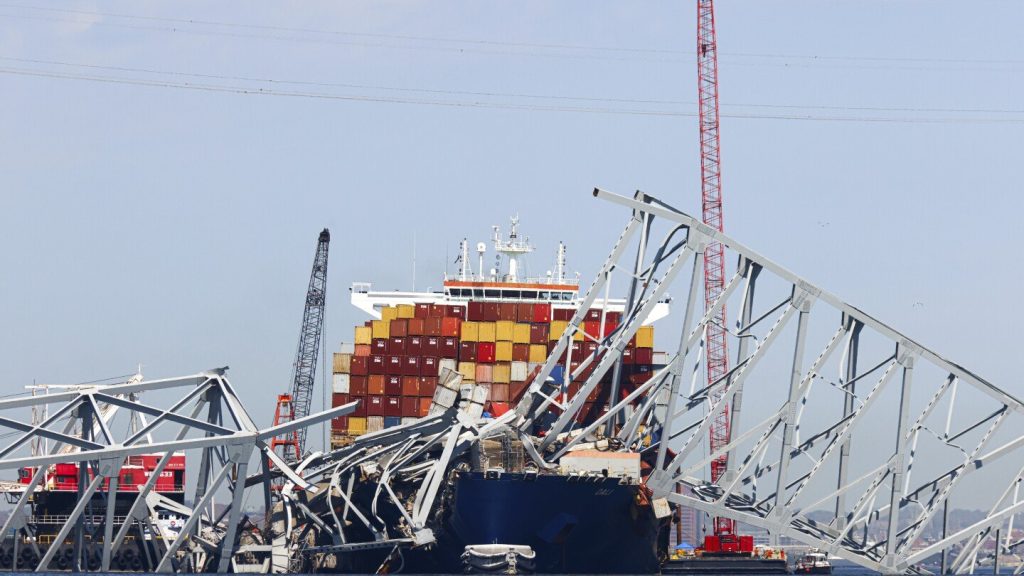The owner of the container ship Dali, which caused the collapse of Baltimore’s Francis Scott Key Bridge last month, has initiated a process requiring owners of the cargo on board to cover some of the salvage costs. Singapore-based Grace Ocean Private Ltd. made a “general average” declaration, allowing a third-party adjuster to determine what each stakeholder should contribute towards the costs associated with refloating the Dali. The ship remains stuck with sections of the fallen bridge draped across its damaged bow, and crews are currently working to remove containers and clear debris from the Port of Baltimore’s main channel.
The general average declaration is a routine practice in maritime law that has been used for centuries to share the costs of saving a vessel or its cargo among interested parties. In this case, it marks the ship owner’s efforts to minimize its financial responsibility in what could become one of the most expensive maritime disasters in history. Grace Ocean and the ship’s management company, Synergy Marine Group, have also filed a petition to limit their legal liability under U.S. maritime law. Attorneys for some of the roadwork crew members who died in the collapse have vowed to challenge this petition and hold the companies accountable.
One of the cargo owners, Mediterranean Shipping Company, was informed of the general average declaration by Maersk, the Danish shipping giant that chartered the Dali. The declaration indicates that the ship’s owner anticipates “extraordinary costs” for which they expect contribution from all salvaged parties. The Dali, carrying about 4,000 shipping containers, is expected to return to the Port of Baltimore once it is refloated. The ship departed the port on March 26, destined for Sri Lanka, but lost power before reaching open water and struck the Francis Scott Key Bridge, causing it to collapse into the Patapsco River. The FBI and the National Transportation Safety Board are conducting investigations into the cause of the disaster.
Six members of the roadwork crew tragically lost their lives in the collapse, with two victims still unaccounted for. Police were alerted by a mayday call from the ship’s pilot and rushed to stop bridge traffic, but were unable to prevent the disaster. The collapse halted most commercial traffic through the Port of Baltimore, as the main channel was largely blocked by debris from the bridge and the damaged ship. As crews work to clear the wreckage and refloat the Dali, efforts are being made to ensure the safe return of the ship and its cargo to the port. The involvement of third-party adjusters and legal proceedings related to financial responsibility showcase the complexity of addressing the aftermath of maritime disasters and the allocation of salvage costs among stakeholders.


